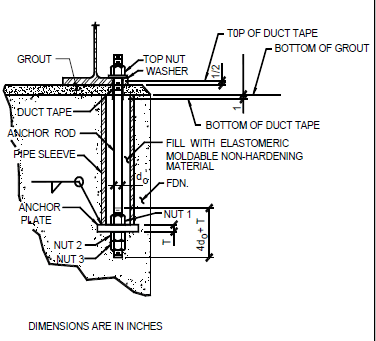atrizzy
Structural
- Mar 30, 2017
- 362
What's YOUR opinion on grouting of sleeved, preloaded anchors (for dynamically loaded equipment)?
On one hand, if grouting after torqueing down the bolts, you don't need to rely on the preload friction for shear resistance.
On the other hand, if a bond occurs between the grout and the bolt, you lose your stretch length. Not to mention that the contractor may well be tempted to grout prior to torqueing.
I've seen it done both ways. What say you all?
On one hand, if grouting after torqueing down the bolts, you don't need to rely on the preload friction for shear resistance.
On the other hand, if a bond occurs between the grout and the bolt, you lose your stretch length. Not to mention that the contractor may well be tempted to grout prior to torqueing.
I've seen it done both ways. What say you all?

